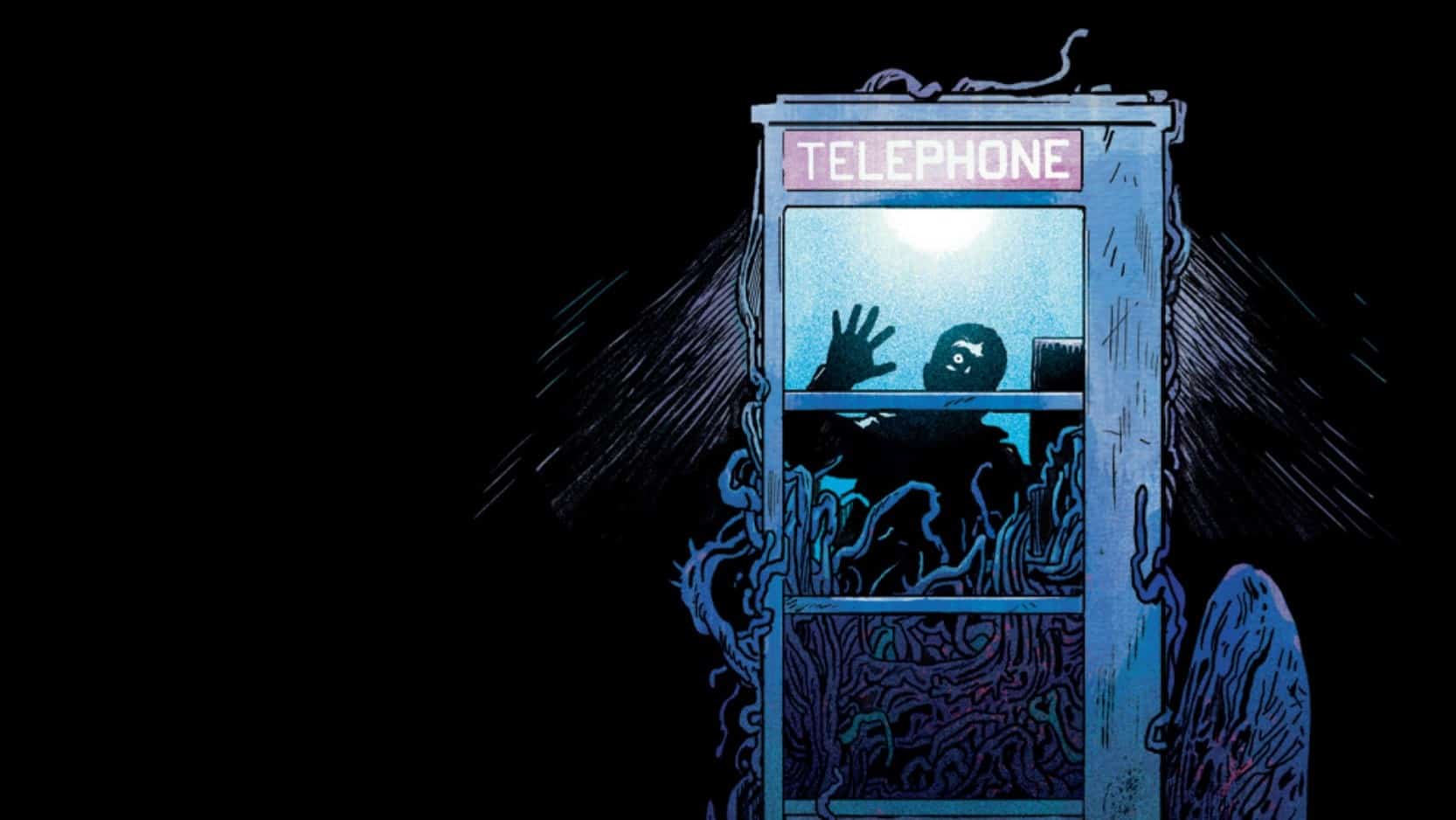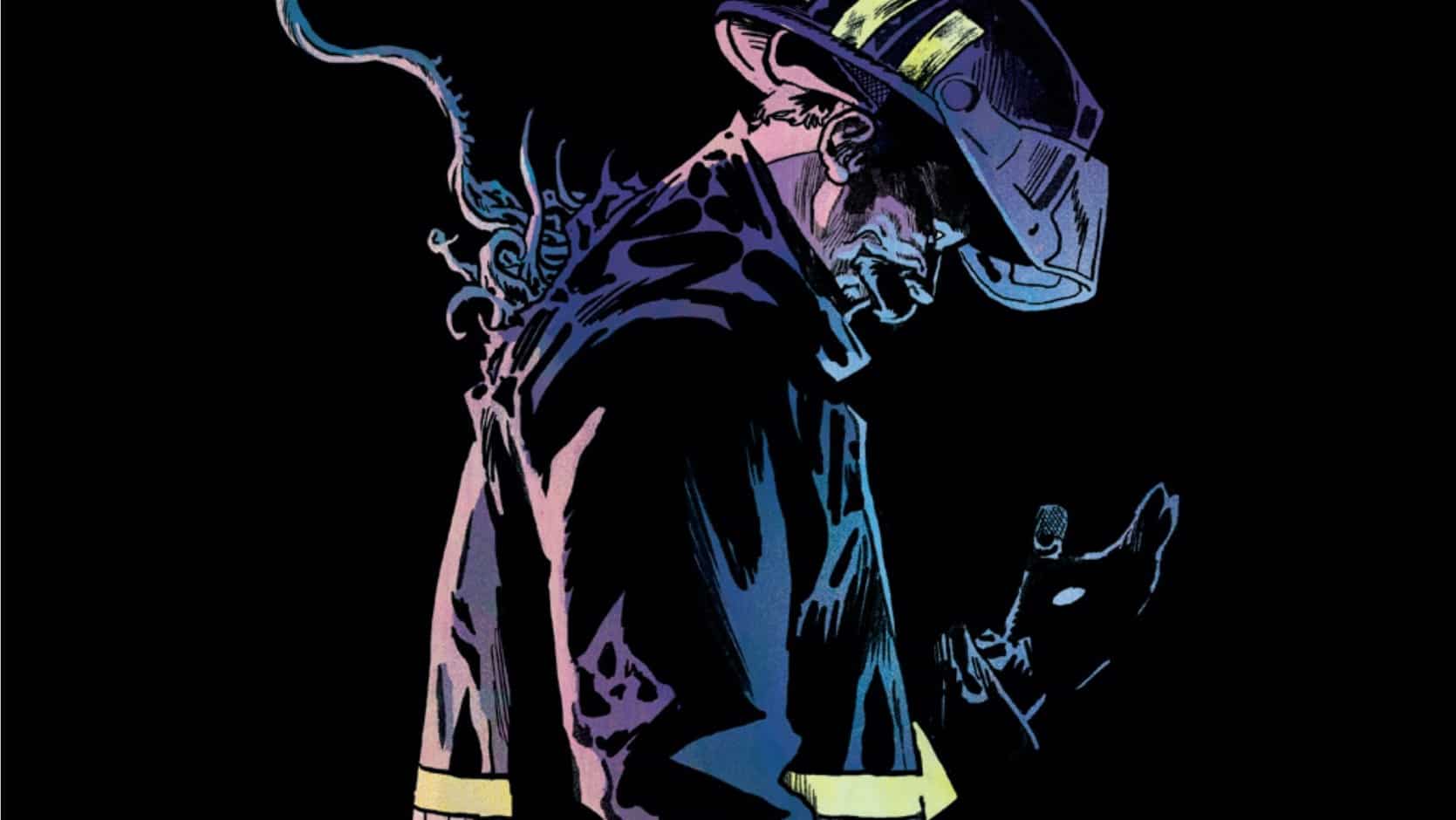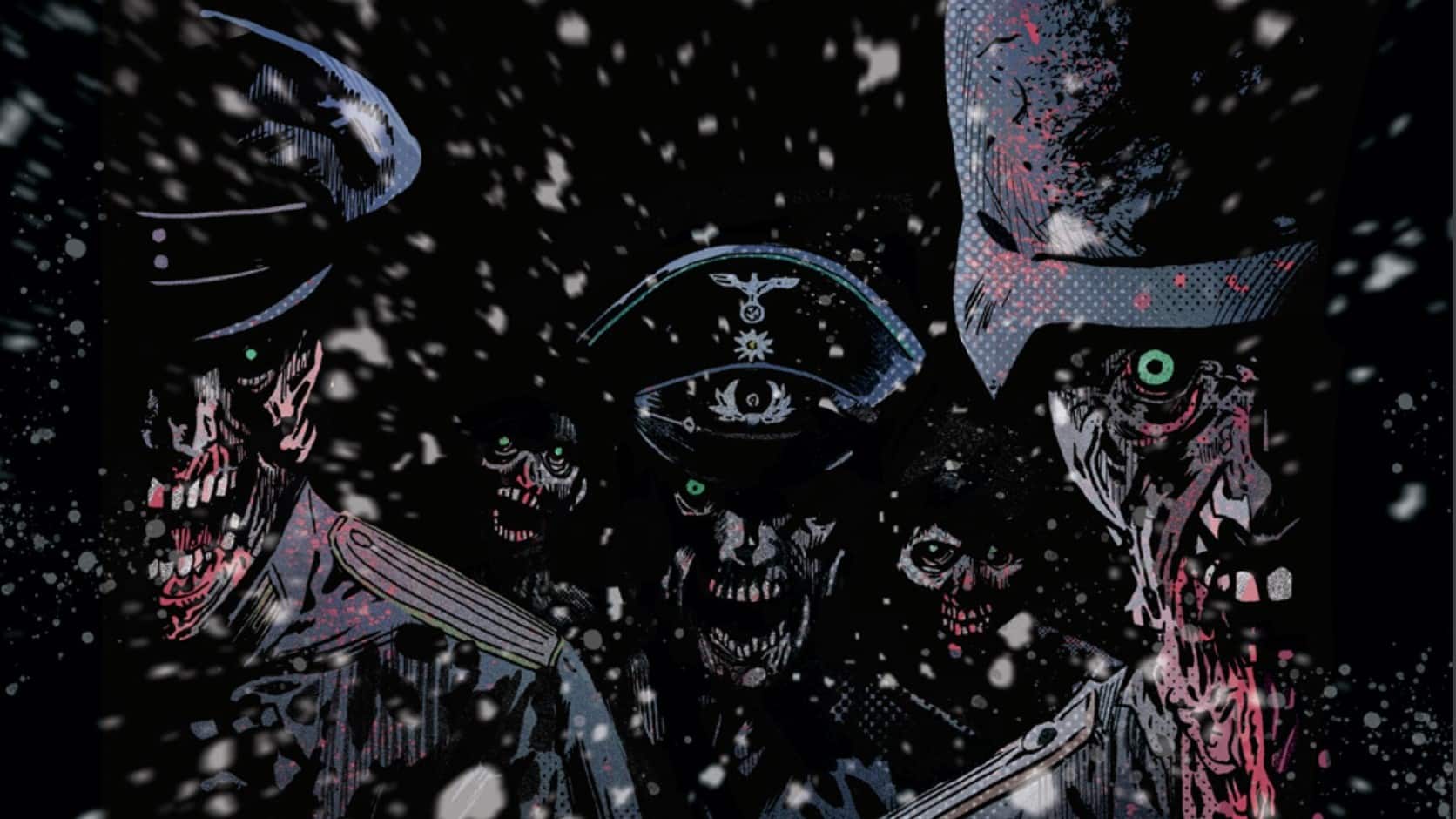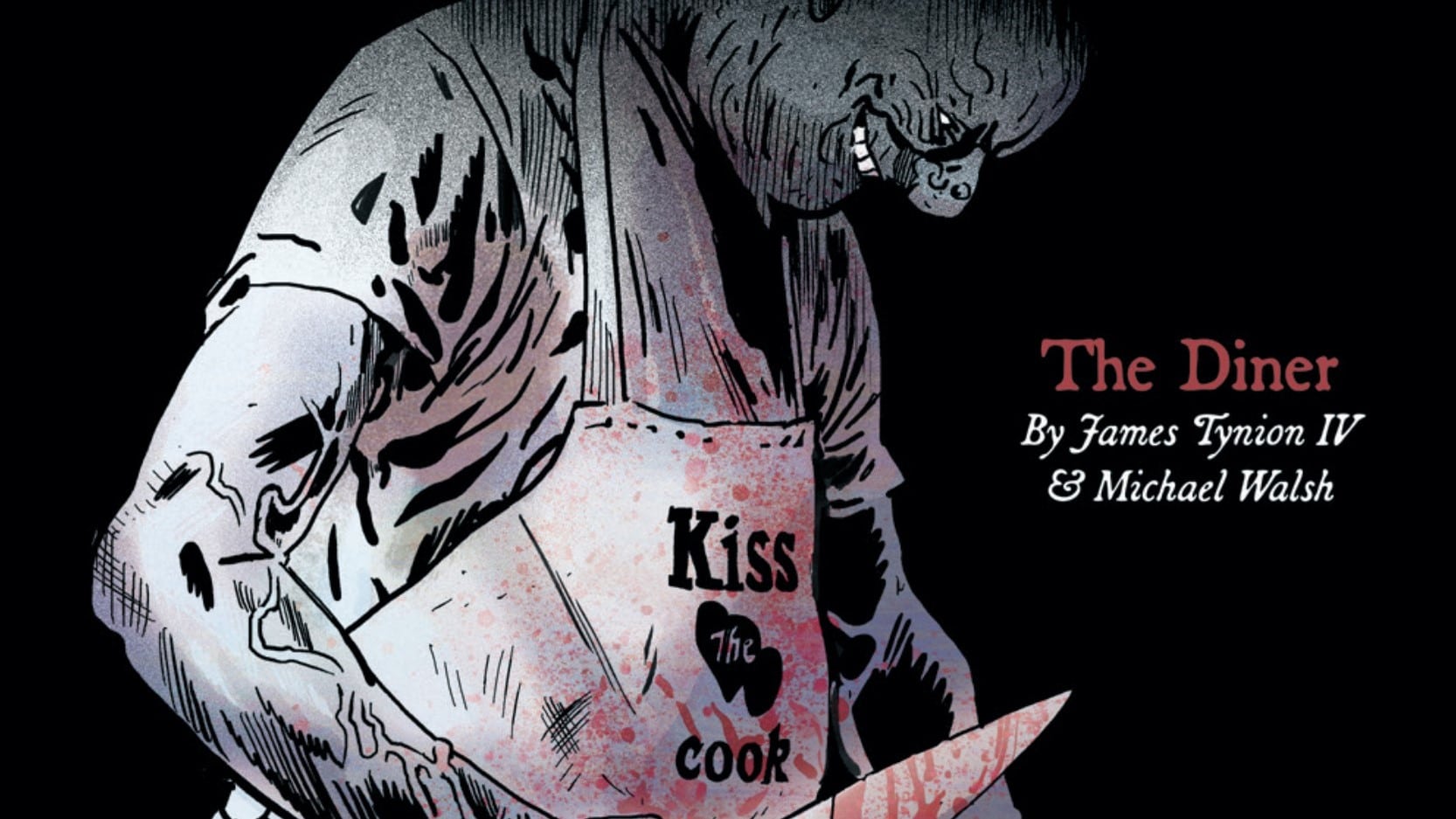It’s Y2K and all hell is about to break loose for a very pregnant woman named Karena in The Silver Coin #13, written by Johnnie Christmas, drawn and lettered by Michael Walsh, and colored by Toni Marie Griffin and Walsh for Image.
Content warning from the issue: This issue contains graphic images related to childbirth, including potential miscarriage, which may be disturbing to some readers.
Mark Turetsky: Hey, Ritesh, glad to have you back on another issue of The Silver Coin!
Ritesh Babu: Hey, Mark! I’m glad to be back. Or, well, terrified to be back would be more appropriate, I guess.
Mark: Yeah, this issue is a lot. I’m wondering if this was written in response to the leaked Supreme Court decision rescinding Roe v. Wade. The whole notion of pregnancy horror might be coming back into vogue in a serious way in the United States, sadly.
Ritesh: Yeah, this was heavy. The more I think about it, the more only one word comes to mind with this story for me: Unnerving. That probably best encapsulates my experience with it. It is probably the most deeply disturbing issue of the book to date. It strikes a visceral chord and evokes a sort of horror beyond anything the book usually does, I think. And yeah, it does feel like a very post-Roe v. Wade story. It took me a bit to fully get through it, and once I did I just had to sit with it, because geez.
Mark: Agreed. I usually read this series through a kind of “Ooh, that’s gross, but also kinda cool” lens. And this one is, I think you put it well, unnerving. And look, I don’t think this is meant to be anything but unnerving, so it’s achieved its goal, and then some. You have to read it from the point of view of what it’s saying about society; Karena is a woman of color, which, in American society is strike one against her for receiving prenatal care. She also lives in a trailer, so strike two. And that’s just on a societal level. On a personal level, she’s been abandoned by Brett, the father of her child. She’s got Brett’s new girlfriend, Liv, referring to their child as “it.” Even before the literal horror stuff starts happening, we’re seeing a different, non-supernatural kind of horror.

Ritesh: Yeah. There’s a reality that it hits and strikes upon that chills, before we get to all the supernatural coin stuff. And one can’t say the tells aren’t there. Even in the early introduction page of the “happy couple” after finding out the news, Brett says “my baby” as opposed to “our baby,” and Karena has to correct him. The implication that he doesn’t see her as an equal partner and more so as an object that produces “his” baby pays off later when we finds out he’s cheating. And he claims the baby isn’t his, but someone else’s. The dude is mistreating Karena at every turn and gaslighting her to abandon her with cheap, horrible and empty justifications. It’s a portrait of a rather narcissistic, selfish masculinity that sees everything not as it is, but from a lens of ownership and benefit. And so he’s prone to changing his mind and destroying this woman’s life in a deeply dehumanizing way. Because he doesn’t really see her as human, not really.
And the extremity of that sort of thing is made manifest in the form of the devilish “child,” the “monster” we see haunting Karena throughout the issue, reducing her to a baby-popping machine. It’s a deeply dehumanizing, horrible worldview.
Mark: And it’s the horror of bringing a child into this world. The choice of setting it during Y2K can’t be a coincidence, the apocalyptic air surrounding it. Don’t think I missed the reporter being named Joan Patmos (named for John of Patmos, or John the Revelator, the author of the biblical Book of Revelation). Sam’s arrival (she ends up choosing the name that Brett suggested) portends terrible things not just for Karena but for the world at large. Now, correct me if I’m wrong, but my read is that when Karena manages to drop the coin, the coin kills the baby. I was slightly confused because we have her saying, “Did it kill … my baby?” and then screaming, and a couple of panels later, we see a baby in a newborn incubator. I thought at first we were seeing Karena’s newborn, but it’s just the first of the other babies to open their (now green) eyes. And then on the final page, we see her mourning her lost child. It’s a miscarriage framed through a lens of paranormal horror.
Ritesh: That was indeed my interpretation, yes. And the even greater, chilling implication is that this is just but one case like this. That legions more such as this case persist beyond, and it asks us to take in the horror of that. All of these children with the green eyes of the coin. It’s telling. Born to serve the coin is a rather potent idea in the context of the book at large and the idea of capitalism needing labor, needing those who serve it, and so they must be, no matter what. The issue’s rather chilling.
Mark: Ooh, that double meaning of the word “labor.” And as far as the rest of the series goes, this is the one of the furthest forward we’ve seen in time, kind of. I think we pegged issue #10 as somewhere in the early 2000s, and issue #4 is in 2467. There was also the Aditya Bidikar story in issue #10 that was set in 2007, but this issue ends in 2019, and we see Karena tracking the green-eyed children born in the hospital that night. It seems like, the further forward we move on this timeline, the more widespread the influence of the coin is going to be. I know we’ve joked a lot in our Slack about society having reached its apex in 1999, but it seems like this comic might agree with us.
Ritesh: No kidding. The next issue of this book is written by Pornsak Pichetshote, who is coming off two absolute slam dunks in Infidel and The Good Asian, which just wrapped up this year. I suspect we’re in for a hat trick.
Mark: And it’s set in 2020, widely regarded as [checks notes] a really bad year. Welp, it should be a real upper of an issue, don’t you think?
You don’t need to answer that.







